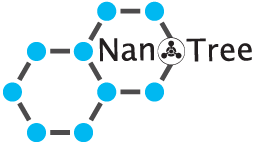A specialist company dedicated to supplying quality chemicals and processing aids.
Products Overview
An ion exchange resin is usually a polystyrene polymer that can exchange ions of opposite character from an aqueous medium. The beads are porous and has large surface areas with a large number of ionic sites which can be used to trap ions whilst exchanging them for other ions. Most of the resins are crosslinked with divinyl benzene which increases the strength of the beads but decreases the ion exchange capacity. Particle size also influence the exchange capacity as smaller beads have a higher surface area but this increases the overall head loss.
The resin itself is composed of organic polymers that form a network of hydrocarbons. Throughout the polymer matrix are ion exchange sites, where so-called “functional groups” of either positively-charged ions (cations) or negatively-charged ions (anions) are affixed to the polymer network. These functional groups readily attract ions of an opposing charge.

Ion exchange resin
Purolite® is the leader in making small diameter beads of up to 35 microns.
Four main types of ion-exchange resins differ in their functional groups:
- Strongly acidic, typically featuring sulfonic acid groups, e.g. sodium polystyrene sulfonate.
- Strongly basic, typically featuring quaternary amino groups, for example, trimethylammonium groups.
- Weakly acidic, typically featuring carboxylic acid groups.
- Weakly basic, typically featuring primary, secondary, and/or tertiary amino groups, e.g. polyethylene amine
Categories of Purolite
-
Strong Acid Cation Ion Exchange Resins
-
Weak Acid Cation Ion Exchange Resins
-
Strong Base Anion Ion Exchange Resins
-
Weak Base Anion Ion Exchange Resins
-
Adsorbent Resins
Adsorbents are used to purify industrial products and concentrate the target molecules of interest. Purolite® products are available in a broad range of matrices and porosities, and our portfolio of adsorbent resins presents solutions for many industrial applications such as food and pharmaceutical processing, flavor and fragrance extraction and environmental applications... -
Chelating Resins


